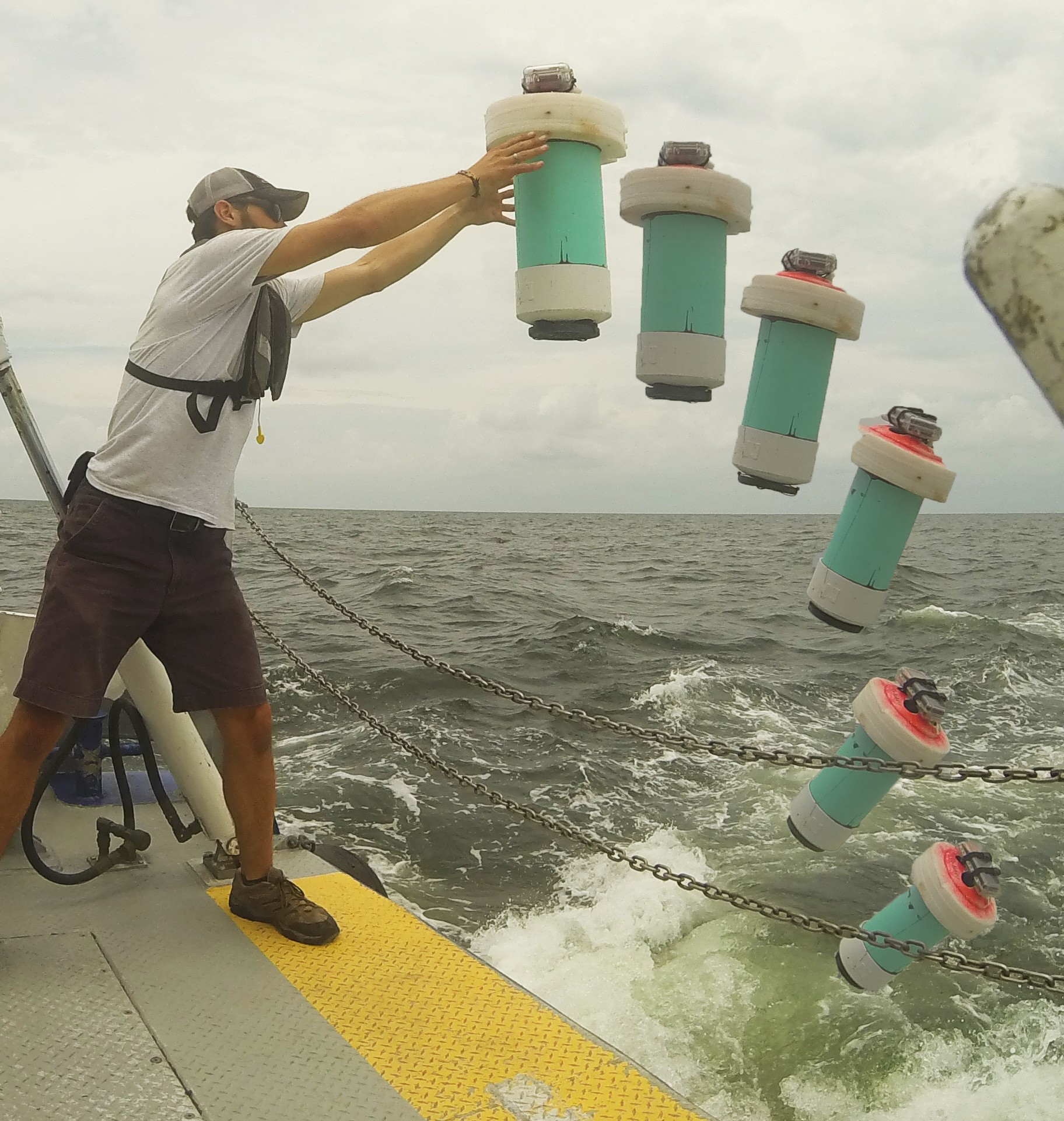Originally published on July 31, 2013 in the University of Miami Rosenstiel School Blog
Written by Nathan Laxague
It wasn’t a large blowout. Or a particularly messy one. Or one that required multiple plugging attempts in deep water. No- the blowout of the well worked by Hercules 265 was thankfully benign in comparison to numerous disasters in recent memory. While attempts to quantify the environmental damage are underway, initial observations show a relative lack of the damaging oil responsible for mucking up the fragile Gulf coast. 
Photo by the Bureau of Safety and Environmental Enforcement
CARTHE, the Consortium for Advanced Research on Transport of Hydrocarbon in the Environment, works to predict where oil might go in the event of an oil/gas spill, like this one. Our involvement in the studying of the immediate aftermath of this incident began as a string of brief, terse e-mails and texts on Wednesday, July 24th. Experiments were moved. Meetings were bumped. The Consortium would be involved in an observational project. The exact details of that involvement (formulated over meetings and conference calls) were told to us as follows: two to three PhD students would prepare ~20 surface drifters (each equipped with the now-standard SPOT GPS device and extended battery pack), drive to Cocodrie, Louisiana, and board the R/V Acadiana for a fast-response deployment. The Acadiana is owned and operated byLUMCON (Louisiana Universities Marine CONsortium).
 The journey went as any such road trip should- 1000 miles of flat, open road and more country stations than any reasonable person could handle (excluding, perhaps, my partner-in-science, fellow student Conor Smith). Our 12:00 AM (Friday night/Saturday morning) arrival was followed by a 12:30 AM loading of the boat and a 1:30 AM bedtime. We squeezed in a bit of a nap, were on the dock at 4:45 AM, and were creeping through the bayou before we saw the sun. The Acadiana was advertised by Max, the vessel’s Captain, as a ship that rode the waves like a cork. It’s difficult for me to describe my body’s reaction to those cork-like motions, but suffice it to say that never have two-foot waves seemed so fierce (as far as the tasks of reading or keeping a meal down are concerned).
The journey went as any such road trip should- 1000 miles of flat, open road and more country stations than any reasonable person could handle (excluding, perhaps, my partner-in-science, fellow student Conor Smith). Our 12:00 AM (Friday night/Saturday morning) arrival was followed by a 12:30 AM loading of the boat and a 1:30 AM bedtime. We squeezed in a bit of a nap, were on the dock at 4:45 AM, and were creeping through the bayou before we saw the sun. The Acadiana was advertised by Max, the vessel’s Captain, as a ship that rode the waves like a cork. It’s difficult for me to describe my body’s reaction to those cork-like motions, but suffice it to say that never have two-foot waves seemed so fierce (as far as the tasks of reading or keeping a meal down are concerned).
Shall I get on with it, then?
The 12-hour transit was filled by a four-hour drifter deployment operation, during which our 21 floating detectives were distributed about the Hercules 265 rig. Much like during our 2012 GLAD experiment, the drifters were organized into an arrangement of triplets (in this case, triads of 200m-spaced drifters encircling Hercules at a range of 8 km). This method marries the traditional dispersion experiment with the practical, incident-response targeted drifter release. The upside of this is a data set from which to glean sets of information satisfying multiple ends. We look to extract both dispersion statistics (a measure of how water- or oil- spreads out) and information about the behavior of the Gulf in the immediate spatial and temporal vicinity of a rig incident (the latter being something that GLAD, two years removed from Deepwater Horizon, lacked).
It is a bit too early to comment on the data itself. But as the SPOTs tick closer and closer to their demises, it is our hope that they will paint for us a picture of upper-ocean transport that is both scientifically rich and immediately practical.
carthe hercules from CARTHE on Vimeo.
CARTHE scientists aboard the R/V Acadiana (grey line) released 21 floating GPS drifters (small black dots) around the Hercules rig (green diamond) in order to track where oil or gas might go if there was anything released from the well. The circular cross indicates the center of mass of the drifters, while the orange area in the animation is all the potentially impacted areas. Scientists will track many of these drifters for the next month. (Movie-image credit: Edward Ryan (University of Miami and CARTHE))

